Welcome to Implement Safe Work Practices. In this topic, you will learn:
- Develop and maintain own knowledge of WHS
- Apply legislative requirements to work tasks
- Duty of care requirements relevant to work tasks
- Use Personal Protective Equipment and other measures
- Safe use of tools, equipment and materials within work tasks
- Participate in WHS consultative activities.
Terminology and vocabulary reference guide
Working in an office environment, you need to be familiar with terms associated with principles and use the terms correctly (and confidently) with clients, your colleagues, and other industry professionals. You will be introduced to many terms and definitions. Add any unfamiliar terms to your vocabulary reference guide.
Activities
There are activities within this topic and an automated quiz at the end of this topic. This is not part of your assessment but will provide practical experience that will help you in your work and help you prepare for your formal assessment.
All workers are legally responsible to create and maintain a safe work environment for others and themselves. Implementing safe work practices requires the business to have its’ employees knowing and understanding the proper and safe ways to carry out tasks.
For a worker to keep developing and maintaining their knowledge of WHS, a business will need to invest some time and money in the proper resources or expertise for training their staff. The business can empower its’ staff with the knowledge of how to manage health and safety in their workplace through training, but also, created opportunities to implement WHS tasks. These tasks may include:
- Completing documentation and reporting WHS issues
- Contribute to workplace procedures for identifying hazards and controlling risks
- Participate and contribute in WHS consultations
- Participate in fire drills.
Workers are encouraged to further develop and maintain their own WHS knowledge by:
- collaborating with staff members and asking questions
- partaking in educative courses for professional development
- utilising online resources such as government websites to stay informed of legislative changes
- using online networking to further discuss key issues.
To stay informed with the latest updates, it is highly recommended that workers subscribe to specific WHS information from Safe Work Australia using the following link: Safe Work Australia- subscribe-up.
Each regulator has a website that includes a series of resources, webinars and/or subscriptions to newsletters and updates. The following table displays recommended subscriptions from their websites to develop and maintain WHS knowledge necessary for any worker.
| State/Territory | Recommended resources |
|---|---|
| Australian Capital Territory | WorkSafe ACT- Subscription to Alerts |
| New South Wales | SafeWork NSW- SafeWork Wrap newsletter |
| Northern Territory | NT WorkSafe-Safety Alerts |
| Queensland | Workplace Health and Safety Queensland- Newsletters |
| South Australia | SafeWork SA- Subscribe to news |
| Tasmania | WorkSafe Tasmania- General subscription |
| Victoria | WorkSafe Victoria- Safety alert subscription form |
| Western Australia | WorkSafe WA-Subscribe to WorkSafe newsletters |
| Commonwealth | Comcare- Subscribe to Comcare eNews |
All tasks that are performed in the workplace will incorporate health and safety requirements, therefore, the business should include safe work practices into training and inductions as a way of raising safety awareness and further emphasising its importance.
The first step in working safely is understanding the legal obligations and how to comply with these in the workplace. Australian workers must consider legislation, the Codes of Conduct and their workplaces’ policies and procedures when conducting tasks.
Legislation
The Workplace and Occupational Health and Safety (WHS/OHS) laws in Australia place the responsibility on employers in cooperation with employees, to promote secure and safe working environments and to ensure the health, safety and welfare of people in the workplace. It focuses on reducing work-related injuries and diseases and consequently, strengthens and improves work productivity.
Safe Work Australia is the national organisation responsible for the development of the Workplace Health and Safety (WHS) laws also known as the ‘model’ laws. Safe Work Australia has partnered up with the government, employers and employees to help create the legislative framework. However, they are not the regulators, and it is the Commonwealth, States and Territories responsibility for regulating and enforcing WHS/OHS laws in their jurisdictions. The model WHS/OHS laws in Australia include:
- the model WHS/OHS Act
- the model WHS/OHS Regulations
- model Codes of Practice.
WHS/OHS legislation covers all the WHS/OHS acts, and regulations enacted by the States and Territories of Australia. The WHS/OHS Legislation comprises the Work/Occupational Health and Safety Act and the Work/Occupational Health and Safety Regulations. Both pieces of legislation provide legal requirements to comply with. Therefore, familiarisation is a must, to be able to determine these requirements. The specific act and regulations can different between States and Territories.
Work Health and Safety Act 2011 (WHS Act)
The WHS Act defines the broad policies regarding health and safety standards that promote the welfare, health, and safety of everyone in the workplace. The current WHS Act aims to harmonise the jurisdictional WHS laws so that work health and safety is nationally consistent between States and Territories, as they enact and enforce them under their jurisdiction.
Work Health and Safety Regulation 2011 (WHS Regulations)
The WHS Regulation 2011 is a set of regulatory guidelines stemming from the WHS Act 2011. The regulation sets out specific requirements to be met with regards to a wide range of matters relating to Work Health and Safety. The Model Work Health and Safety Regulations offer guidance for many of the aspects of working safely within specific work tasks that apply to a variety of industries.
States and Territories of Australia have their own Work Health and Safety legislation based on the model WHS Act and WHS Regulation developed by Safe Work Australia. This aims in creating a consistent WHS standard across the country.
The following table lists the WHS Act and WHS Regulation of the States and Territories of Australia as well as their respective regulatory body for Work Health and Safety. Please note which Acts and Regulations apply to your own State/Territory.
Australian Standards
Australian Standards contain quality and up-to-date guidelines and specifications for certain industries and businesses in the country. These Standards are not mandatory but are recommended to ensure high-quality work and processes. There are instances where Standards are referenced in national and jurisdictional legislation.1
Codes of Practice
Model Codes of Practice are step-by-step instructions for meeting the health and safety requirements of the model WHS Act and Regulations. Codes of Practice provide advice on how to meet regulatory requirements but are not legally enforceable.2
The following are some relevant Codes of Practice that are approved under the Work Health and Safety Act 2011:
- Work Health and Safety Code of Practice (How to Manage Work Health and Safety Risks) 2015
- How to Manage Work Health and Safety Risks Code of Practice 2021
- Work Health and Safety (Hazardous Manual Tasks) Code of Practice 2015
- Work Health and Safety (First Aid in the Workplace) Code of Practice 2015
- Work Health and Safety (Managing Electrical Risks in the Workplace) Code of Practice 2015
For more information, go to the Model WHS Laws from Safe Work Australia and the Codes of Practice.
Workplace Policies and Procedures
The outlined steps of procedures and practices that reflect the day-to-day work tasks and activities along with the compliance of the WHS Act can be found in the business’ workplace policies and procedures. All staff need to know where the workplace policies and procedures are found and must become familiar with the specific requirements for work tasks, activities, procedures and behaviours.
The workplace’s policies and procedures are typically stored in the intranet and often multiple hard copies are located in different areas of the workplace. At times, a worker may need to be guided by the steps within the workplace policies and procedures to plan a range of routine work tasks before completing them. Planning will involve writing down the steps and a list of resources that may be needed when completing the work tasks or activities. All workers are expected to refer to the policies and procedures to ensure that they are planning and completing a range of routine tasks in safe and logical order.
Common information that is typically found in the workplace policies and procedures may include:
- Health and Safety policies and procedures
- Code of Conducts
- Behavioural policies
- Recruitment policies
- Internet and email policies
- Discipline and termination policies
- Drug and alcohol policy
- Leave entitlement policies.
More specifically, the Health and Safety policies and procedures can provide good insight in performing tasks that may include safe manual handling, cleaning, use of PPE during work activities, emergency procedures and evacuations and identifying and controlling WHS issues in the workplace.
Insert activity here.
All staff, including employers, need to understand and comply with the legislative requirements and work requirements that are suggested in the health and safety policies and procedures. They indicate and emphasise the importance of all workers responsibilities of taking reasonable care of themselves and others in the workplace. This also includes understanding how to do this during their day-to-day activities and tasks. The Health and Safety workplace policies and procedures will align with legislative requirements according to the WHS laws. It will include the written approach that needs to be followed when performing workplace tasks. Workplace documentation and safety signage will need to be implemented into some work tasks.
Safety documentation
In any business, there will be a range of sources that will need to be interpreted and understood for them to be fit for purpose. For instance, various workplace documentation may have textual information where workers will need to understand how and when to use and complete the documentation as required. Let us take a look at some common documentation that is used when applying safe work practices.
Incident report
An incident report is a formal documentation, also referred to as an accident report. Its’ completion is a significant step in the incident response process as the information contained can identify hazards, improve control measures and prevent future incidents. An incident report is to be completed within 24-hours after the event of an incident that has or may cause injury, harm or illness.
Specific information that should be recorded about the incident, but is not limited to, includes the following:
- Worker information includes details such as personal details, job title, occupation, length of time with the organisation, and the particular job
- Details of the incident – such as date, time, location, length of time on the job from the start of work that day
- Nature of the incident: this information typically answers the ‘what’ and ‘how’ concerning an incident
- What was responsible for the incident, for example, machinery, powered equipment or tools, hand tools, chemicals, materials, environmental, animal, or bacterial
- How the incident occurred, for example, as a result of a fall, body stress, biological, mental health, hitting an object, being hit by an object, temperature, heat, radiation, chemicals
- Nature of the injury: this typically refers to:
- Body part/s affected, such as head, neck, upper body limbs, trunk, lower limbs, internal organs, or multiple parts
- Type of injury or illness, for example, fracture, dislocation, sprain, open wound, puncture, burns, bruising, crushing, disease, poisoning, mental disorder
- Treatment required, for instance, recorded could be, nil, first aid on-site, doctor, hospitalisation.
Every business will have its unique version of an incident report form that will require all the relevant information about the incident. Workers must be able to identify the guidelines in how to complete the workplace’s incident report. In addition to this, they must also understand how to read and interpret, the incident report. This will allow the worker to confidently ensure that all reports, whether they are being reviewed or created, are factual and contain the necessary information that meets the workplace requirements accordingly. An incident report must be completed accurately for all incidents, even those that cause no harm. The records of all notifiable incidents that have occurred must be kept for at least five years from the date of notification.
Near miss incidents
A near miss is an incident where no property damage or personal injury occurred, but under a slight difference in time or place, such outcomes would have happened. With near miss incidents, though no harm or damage is caused, a near miss is still an incident. Workers must treat a near miss incident like any other serious incident and notify a regulator. The information in such records can be used to identify hazards and prevent future notifiable incidents and near misses. A regulator needs to be notified of any near miss incidents if they have potential of severe risk.
A near-miss incident report asks typically for the following information:
- What happened: Provide an overview of the near miss incident
- When did it happen: Note the date and time
- Where did it happen: Provide the incident address and/or specific details of the location
- What has been/is being done: Describe what action was or is being taken to prevent a recurrence
- Who is notifying: Provide the name of the person reporting and their position in the workplace.3
Failure to report incidents can result in penalties. For more information, see Safe Work Australia, be mindful that they are not a regulator and cannot advise you about reporting a workplace incident. For further help when reporting an incident, contact the relevant State or Territory Work Health and Safety regulators.
Material Safety Data Sheet
A Material Safety Data Sheet (MSDS), Safety Data Sheet (SDS), or Product Safety Data Sheet (PSDS) is an important component of occupational safety and health. It is intended to provide workers and emergency personnel with procedures for handling or working with substances safely. The SDS can include information to help understand the safe use of a product, such as its toxicity, health effects, first aid, reactivity, storage, disposal, protective equipment, and spill-handling procedures. MSDS formats can vary from source to source within a country depending on national requirements.
Risk Assessment Form
As with any other aspect of a business, there is a risk in health and safety that are derived from the hazards in the workplace. The hazards that are identified may never actually happen, alternatively, they may happen very often. A Risk Assessment form is used to document the identified hazards, assessing their likelihood and the consequences of their risks and apply risk controls to eliminate or minimise the risks.
Cleaning checklist
A cleaning checklist is not a must but certainly is a “good to have” document that keeps a record of the frequency of what is being cleaned in the workplace. This document will often show a list of the areas, equipment and tools that require attention and can be used for certain areas of the workplace including, home offices, kitchen and bathroom hygiene, desk and workstation. A scheduled clean can aid in preventing the spread of viruses (biological hazards) and it is also recommended to use the cleaning checklist before setting up any equipment in the workplace, for instance, clean and disinfect the workstation before setting up equipment, tools and materials such as the computer.
Safety signage
Workplace safety signage helps alert workers and others who may be exposed to workplace hazards and their use is intended for the application within an occupational environment to regulate and control safety-related behaviour. Signage helps in communicating and reinforcing safety messages and providing instructions for emergencies such as fires and evacuations. Workplaces are required by Health and Safety legislation to use signage wherever possible.
The Australian Standards AS 1319:1994 outlines specific symbols that are used in the designs of safety signage and are categorised as seven different types to better identify its’ use and purpose. These seven types are the commonly used signs and symbols in the workplace. Have a look at the following table that includes a brief description and an example for each type. Have you seen signs like these before? Where have they been placed? Consider when you might use it to prevent a hazard from occurring.
| Type | Description | Example |
|---|---|---|
| Stop/prohibition sign |
These signs specify behaviour or actions which are not permitted. The annulus and slash are depicted in red over the action symbol in black. Sign wording, if necessary, is in black lettering on a white background. |
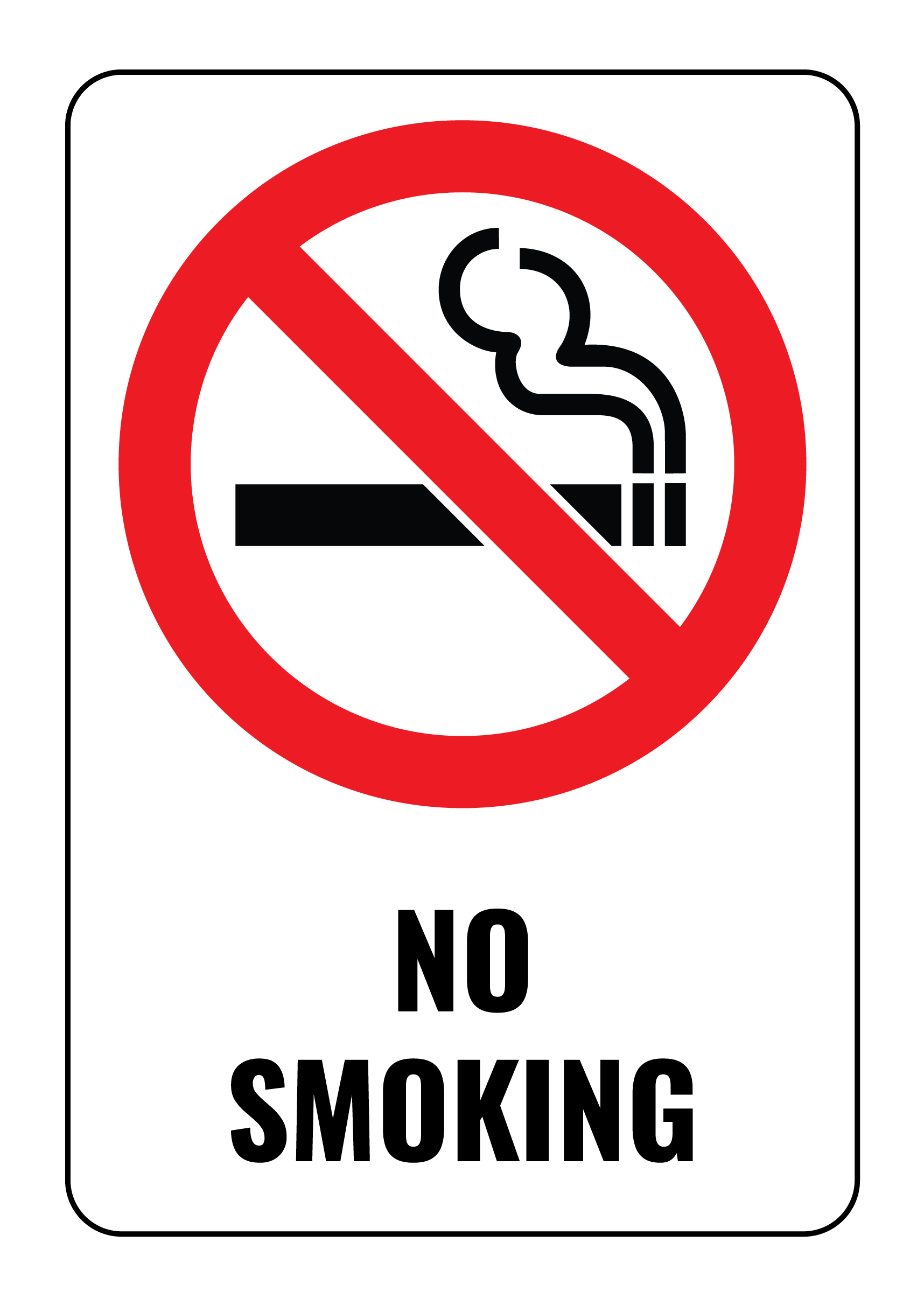 |
| Warning/caution sign |
These signs warn of hazards or a hazardous condition that is not likely to be life-threatening. The hazard symbol is black on a yellow background, and a triangle is depicted around the hazard symbol. Sign wording, if necessary, is in black lettering on a yellow background. |
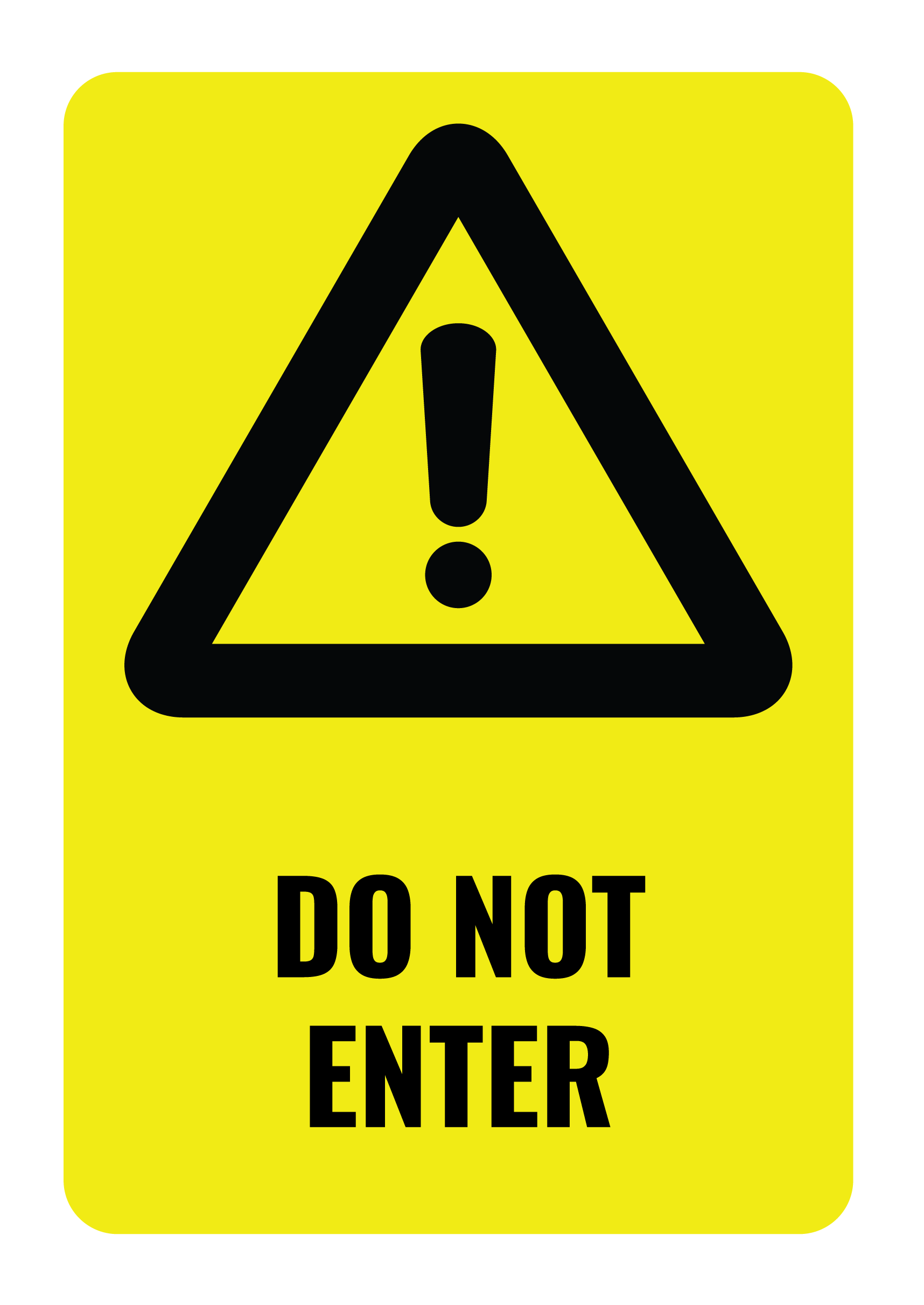 |
| Mandatory sign |
These signs specify an instruction that must be carried out. Symbols (or pictograms) are depicted in white on a blue circular background. Sign wording, if necessary, is in black lettering on a white background. |
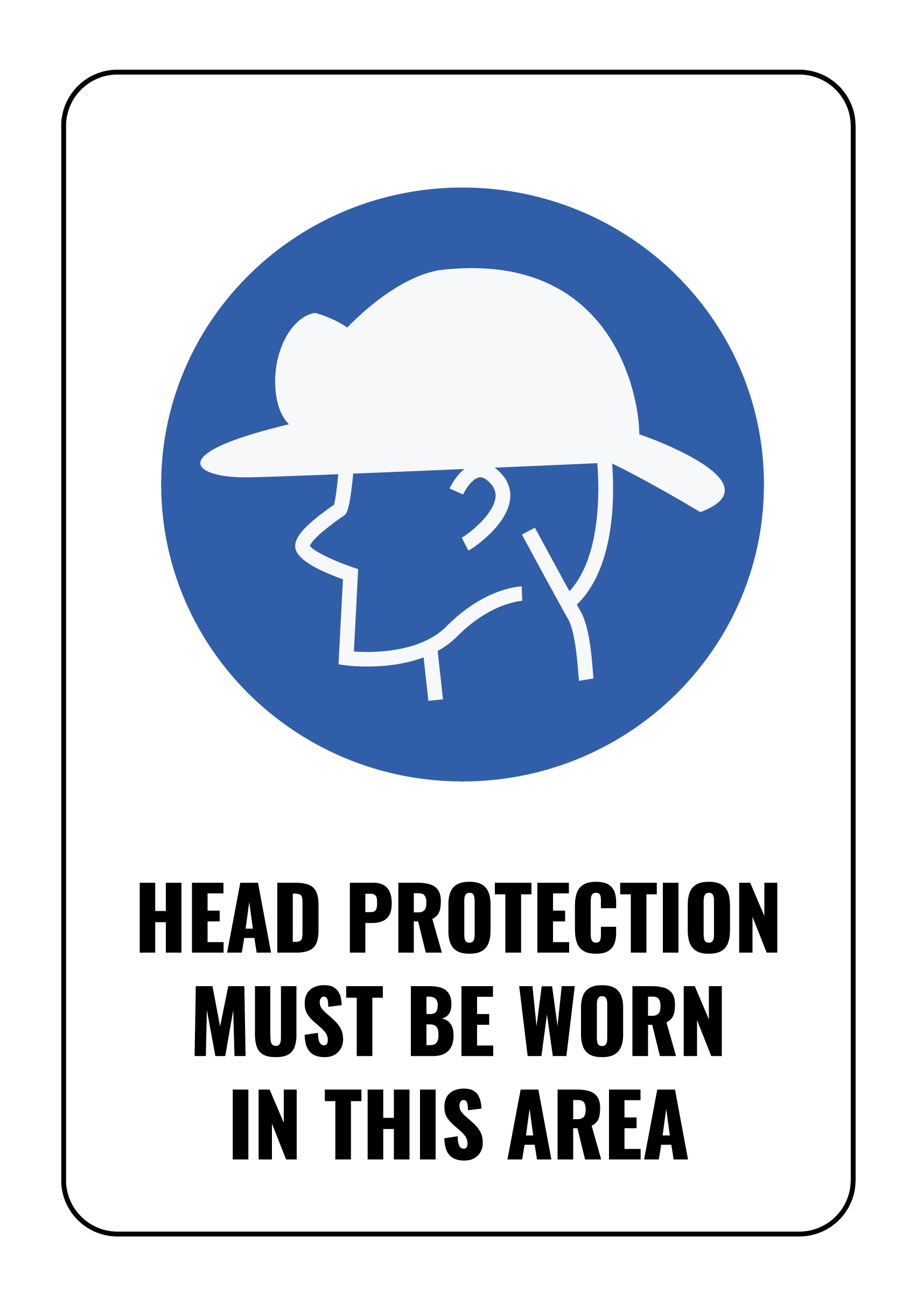 |
| Fire sign |
Advise the location of fire alarms and firefighting equipment. They contain a white symbol and/or text on a red background. |
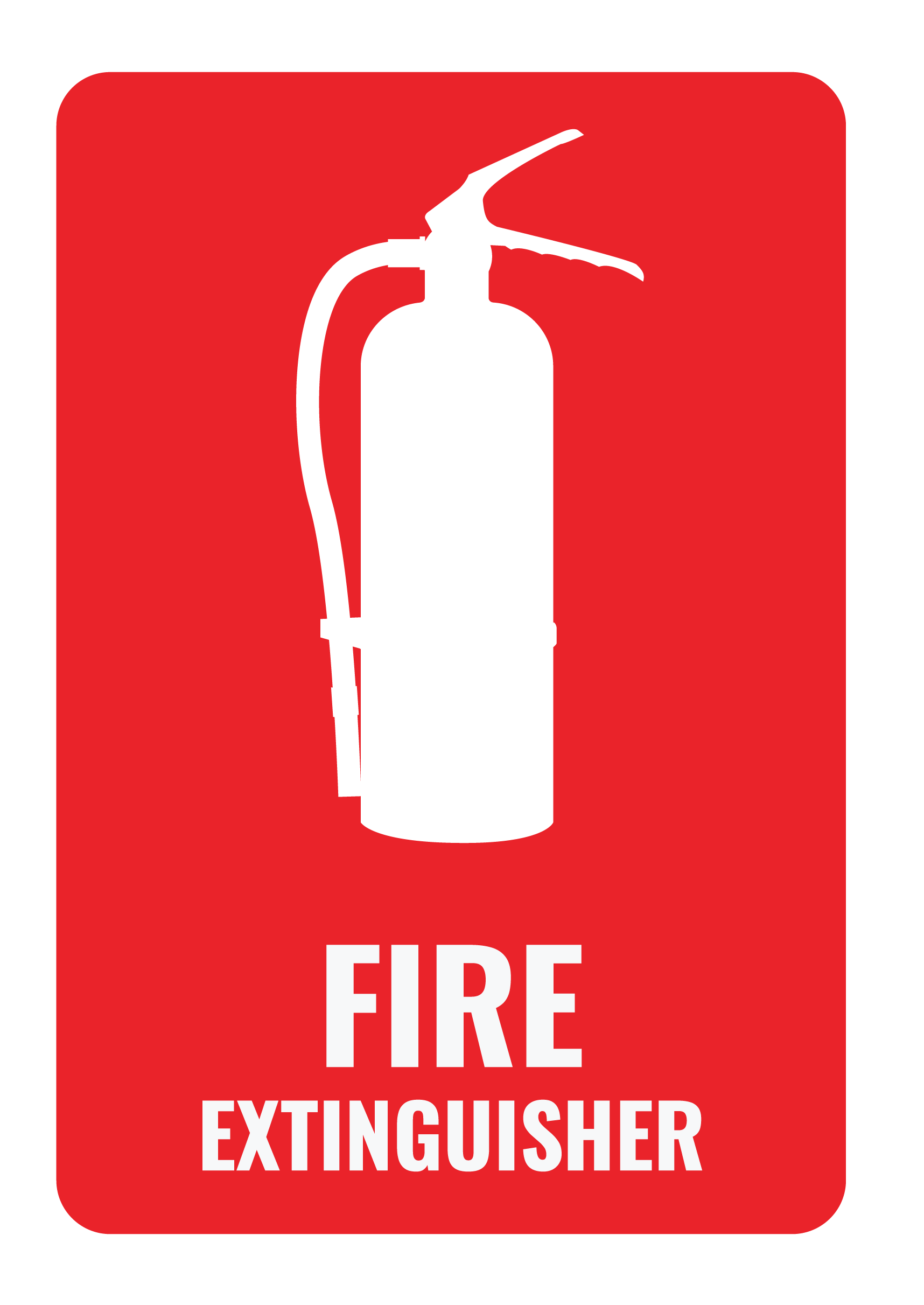 |
| Emergency-related sign |
These signs indicate the location of, or directions to emergency-related facilities (exits, first aid, safety equipment, etc.). Feature a white symbol and/or text on a green background. |
 |
| Danger sign |
These signs provide a warning when a hazard or a hazardous condition is likely to be life-threatening. The word ‘danger’ is featured inside a red oval inside a black rectangle. |
 |
| General information sign |
These signs are not referred to in AS1319, however, are available due to popular demand. They communicate information of a general nature and often refer to Housekeeping, Company Practices and Logistics. |
 |
Aside from understanding and following safety signage in the workplace, it is equally important to know when to apply signage. The following are a few examples that may be needed for use within routine work tasks.
Stop/prohibition sign
When in a meeting or on a work call: Quiet Please P2227
Near items that require heavy lifting: Prevent Back Injury P2226
Warning/caution sign
When mopping or cleaning up a spill: Slippery When Wet W30199
When using a vacuum and the cord may cause a trip hazard: Watch your Step W30152
Mandatory sign
When using bleach to clean a commonly used work area: Face Mask Mandatory Sign M18109
Fire sign
You have identified a safety fire door where people often leave their belongings in front of it: Fire Safety Door sign F1472
Emergency-related sign
If you get appointed as the workplace WHS officer: First Aid Personnel sign E1258
Danger sign
For identified faulty equipment or machinery: Out of Order D10213
General information sign
When you notice dishes accumulated in the kitchen sink: Wash Up as you go sign S2860
More information on the commonly used signs can be found at National Safety Signs.
Maintenance of safety signs
Supervisors, WHS officers and business owners must ensure that all signage including barricading tapes are kept in a good condition so that it does not hinder their effectiveness.
Safety signs should remain:
- legible (day & night if appropriate)
- correctly attached
- correctly positioned
- contain accurate information.
Insert activity here.

Duty of care requirements relevant to own role
Everyone in the workplace has a responsibility to ensure the health and safety of not only themselves but of others. The WHS law outlines specific responsibilities that apply to all workers while performing relevant work tasks. These workers under WHS law are referred to as Duty Holders and are categorised by their role in the business. The four Duty Holders include the following personnel:
- Employers also referred to as Person Conduction Business or Undertaking (PCBU’s)
- Officers
- Employees
- Other personnel.
Everyone in the workplace needs to be aware of their own job responsibilities and their required duties when performing tasks. Think about the people in a workplace or the jobs that are common in the design industry. What category might you fall into? Can you name a job title that falls into each of these categories? The following will provide more information on each of the duty holders and their responsibilities.
Persons conducting business or undertaking (PCBUs)
Under WHS/OHS legislation, employers must ensure the health, safety and welfare of their employees whilst at work, and any other people whose health or safety may be affected by the employer’s undertaking within the work environment. This is known as the general ‘duty of care’. To meet the duty of care requirements, employers must:
- provide and maintain safe work systems and a safe work environment
- monitor workers health and conditions in the workplace
- provide safety instructions, training and supervision as may be necessary to ensure the employees’ health and safety of themselves and others.
- Ensure that premises (and means of access and exit) are safe and without risks to health.5
All these tasks, employers must undertake in Consultation with their workers. Workers have rights that correspond to each of these things. For instance, workers have the right to receive adequate and appropriate information, instruction, training and supervision to enable them to perform their work safely as required. Under the relevant Health and Safety Regulation, which offers guidelines to some of the requirements of the Act, employers must implement a risk management process as a means of eliminating or at least controlling all risks in the workplace. The risk management process is implemented to protect the health and safety of employees and other personnel such as contractors, visitors, or others present at the workplace.
Officers
An officer is generally someone who makes, or participates in making, significant decisions that affect the whole, or a substantial part, of the business such as a senior executive. They can have the capacity to significantly affect the business's financial standing. For small businesses, officers are typically the owners or operators of the business (PCBU’s).
An officer of a PCBU has the duty to exercise due diligence to ensure a business or undertaking complies with its duties under the model WHS laws. This includes:
- making sure workers and other persons are protected against harm
- making sure the business has suitable safe work systems in place.6
Workers
PCBU’s and officers are not the only ones that have the responsibility to keep the workplace (and personnel within the workplace) safe from hazards, risks and incidents. All workers, including those in the graphic design roles, will have duties that need to comply with the WHS/OHS legislation and align with their workplace policies and procedures. These responsibilities include:
- Workers must be able to perform their work without endangering their own or anyone else’s health or safety
- Workers should not interfere with/misuse anything provided in the interests of health and safety
- Workers need to co-operate with the employer’s efforts to control risks
- Workers need to be responsible for the use of PPE when performing specific work tasks and duties
- Reporting any workplace hazards and incidents to managers and supervisors.
The workplace will have consultative arrangements in place where workers can attend the consultative meetings and collaborate further in controlling risks and preventing incidents from occurring.
Others in the workplace
Any person at a workplace, including customers and visitors, must take reasonable care of their health and safety and that of others who may be affected by their actions or omissions. To achieve this, they will need to comply with any reasonable instruction given by the employer/PCBU and ensure that their actions or omissions do not adversely affect the health and safety of any personnel in the workplace.
WHS rights and responsibilities as they apply to own role
Work Health and Safety laws are applied to every workplace to protect all workers in Australia. This includes workers that hold a temporary working visa holder, permanent residents and Australian citizens. Therefore, all Australian workers, including the role of Graphic Designers and all other Duty Holder roles, are also covered by the Work Health and Safety laws of Australia. However, as an Australian worker, you also have rights. The following table depicts the rights and responsibilities of an Australian worker.
| Rights | Responsibilities |
|---|---|
|
As a worker in Australia, you have rights to:
|
Australian workers have an obligation to:
|
Typical workplace health and safety roles
Specific roles may be allocated in the workplace to enhance the maintenance, development and implementation of Work Health and Safety. The two typical Workplace Health and Safety roles include a WHS Officer and Fire Warden.
WHS Officer
The key functions of the WHS Officer are to observe, assess, and report on the safety performance of a workplace, and assist with developing procedures that meet safety guidelines. This includes reporting to a PCBU about any WHS issues, incidents, hazards and risks identified in the workplace. WHS officers may be present in a staff consultative meeting to investigate current, reoccurring, or potential WHS issues that need addressing and may assist in finding solutions.
The WHS officer plays a major role and input for the WHS matters of the workplace and is often and responsible for establishing educational and training programs for workers to assist in collaboratively applying their duty of care to keep the workplace safe for themselves and others.
During a WHS inspection, they will accompany and assist an inspector around the workplace to ensure the business is meeting the standards.
Fire warden
A Fire Warden is appointed by the workplace, it is not unusual to have more than one. Their role assists in implementing and improving an effective emergency procedure. This may involve running practice fire drills with all staff in the workplace. They are trained in how to alert staff about existing fire hazards and help relay information using clear and direct instructions to workers in how to respond in an emergency,
Fire Wardens are familiar with the safe exiting routes and will lead workers to the safe designated area during an evacuation.
They are responsible to further assist those with special needs, such as those injured or in a wheelchair.

It is a requirement that all workers wear appropriate Personal Protective Equipment (PPE) when needed. The type of PPE that is required will depend on each business, industry and task being performed. PPE is classified as the lowest order of control measures according to the hierarchy of controls and should only be considered when other control measures are not practicable, or to increase protection from the hazard. PPE relies on a person’s behaviour and the proper fit and use of the PPE and does nothing to change the hazard itself. It, therefore, requires thorough training and effective supervision to ensure compliance and effectiveness. For example:
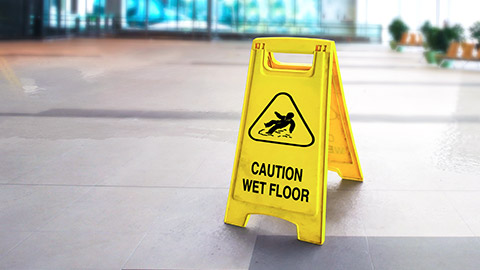
Graphic Designers will need to apply legislative requirements to work tasks that will many times entail the use of PPE, tools, equipment and other materials. These tasks can consist of cleaning, tidying, job performance and other work requirements. When conducting routine tasks, staff should always ensure they are following the workplace policies and procedures and avoid finding shortcuts as they can lead to injury and accidents. The workplace should also provide training for staff so they can feel confident that they are performing tasks according to workplace procedures and safe work practices.
Let us take a look at the safe work practices for many work tasks that can be found in the design industry. Take note of the PPE, tools, equipment and other materials a worker will need to perform each task.
Handling chemicals
When handling chemicals such as ink from a printer, cleaning disinfectants, bleaches and other cleaning solutions, the use of gloves will be required to prevent the absorption of chemicals through the skin. When removing gloves, remove them from the wrist to slip them off inside out, keeping any biological hazards contained inside the glove before disposing of it into a waste bin. Prolonged exposure to some chemicals can be damaging to the health of individuals. When using strong chemicals such as bleach, it is also recommended to only use it in a well-ventilated area and for added protection, wear a mask to minimise the inhalation of the fumes that can be damaging to the respiratory system. Goggles will also provide the eyes with protection as they may prevent splashbacks of any cleaning solutions and chemicals. The workplace will have stored the Material Safety Data Sheet (MSDS) to assist in the correct usage of chemicals to maintain the safety and health of all in the workplace.
Lifting and moving of objects
There will be times in the workplace where you may be required to lift and move office furniture and equipment. This might vary in loads, such as the simple lifting of photocopying paper off the floor to heavier loads such as rearranging the design of a workspace that includes desks and computers. It is imperative to know the correct safe manual handling procedure that helps in reducing the risks of muscle strains.
All workers must be trained in how to lift heavy loads with care. They must be aware of the available equipment that is used to facilitate moving objects in a non-strenuous way around the office. For instance, the use of a trolley will help in moving computers and monitors around the office without causing any back strain. Therefore, before lifting any item, check if it can be lifted manually or if a lifting aid must be used. PPE that is essential to wear when lifting heavy loads, includes appropriate footwear. Closed in slip-resistant shoes, normally with rubber soles that provide good grip, is needed to avoid any slips, trips or falls when transferring objects from one area to another. This PPE item can also minimise an injury if any items fall on your toes.
The following video demonstrates simple steps in how to avoid strain and injury when performing correct manual handling techniques.
In summary, the steps for correct lifting techniques will consider posture, direction, movement and strength.
Let us recap on some important factors for safe manual handling.
- Make sure appropriate footwear such as closed in shoes are worn
- Check if the load is too heavy to lift and if you will require the assistance of a trolley or other aide
- Stand with feet apart and one leg slightly forward to maintain a stable position
- To lift, bend your knees and hips then move the object up keeping the back straight
- Have a good grip on your object
- Ensure to keep your head up and look ahead, not on the load
- When lifting, keep the load as close to your body as possible and do not twist at the hips.
- Keep the load close to your waist, with the heaviest weight closest to your body.
Ergonomics
Ergonomics refers to the process of designing the workplace fit for the people that will be using them. When referring to ergonomics in an office environment, it relates to the set-up of their desk area with a computer in the workplace or when working from home. Good ergonomics requires a careful selection and set-up of the appropriate furniture and equipment for computer-based work. Having appropriate furniture and equipment allows the individual to improve the set-up at their workstation, increase their comfort and reduce potential injury. It is strongly recommended that any new equipment or furniture be trialled with users before purchase.7 Have a look at the following illustration of the basic features that apply to a standard computer workstation. Pay close attention to the eye level and posture that should and should not be used whilst working at the desk.

Click on the following factors that can contribute to good ergonomics for a standard workstation.
Slips, trips, and falls
Slips, trips and falls can occur all too often in Australian workplaces, where in most cases, they were preventable. Take for instance a wet floor, if someone has mopped an area and the floor is still drying, signage should be used such as applying a “slippery when wet” sign before mopping, once the area is dried, it can be removed. If there is no such signage, it is likely someone may not realise the floor is wet, and slip. It is important to know the various preventative measures that can be taken to minimise the risks of these hazards and also what to do if the hazard causes an incident to occur.
Trips may occur due to poorly thought-out designs such as floor rugs that lift, chords, boxes and other messy office equipment obstructing walkways. Slip-resistant footwear reduces slips. Checking that shoes that are worn suit the task and floor surfaces give sufficient friction. By wearing high heels with small contact areas can lead to an accident when walking over uneven ground or when handling heavy loads. If an incident does occur, an incident report will need to be completed and addressed with the designated personnel in addition to assisting anyone that may require medical attention.
For more information, see Safe Work Australia, be mindful that they are not a regulator and cannot advise you about reporting a workplace incident. For further help when reporting and resolving a hazard or incident, you can contact your State or Territory Work Health and Safety Authority.
Housekeeping
Performing tasks that relate to housekeeping duties help to maintain the overall safety in the office. These tasks may include but are not limited to:
- Maintaining suitable storage systems
- Keeping walkways clear of obstruction
- Routine spot cleaning
- Removal of any waste materials
- Immediate clean-up of spills.
All workers are responsible for maintaining the overall cleanliness, tidiness and safety when performing housekeeping tasks in the workplace.
Electrical equipment
Ensuring that electrical equipment is correctly installed, checked/tested frequently, repaired, maintained or replaced when necessary. This will prevent the risks of potential hazards from occurring. Any faulty electrical equipment that is faulty needs signage to alert others not to touch or that it is out of order.

A consultation is a legal requirement and is also referred to as a consultative meeting. This is a meeting that shares relevant information about WHS issues with workers. Workers that participate in a consultation, closely examine the business’ WHS issues and concerns. Participants gain a well-rounded understanding of the business’ conduct and contribute their ideas and solutions when improving and maintaining the health and safety of the workplace. A consultation may include the following consultative activities during their discussion:
- Work tasks and responsibilities
- Equipment function and usage
- Signage in the workplace
- Workplace policies and procedures
- Resolving and reviewing health and safety issues
- Incidents, accidents and emergencies
- Training activities
- Recent or upcoming WHS inspections
- Identified hazards and management of risks
- Deciding on how to implement action plans.
The following video gives you a snapshot of the consultation at work and the obligations of all workers. Listen carefully to the approaches that can be taken for a consultation, such as the Health and Safety Representative or Health and Safety Committees.
Consultation is a collaborative process. All participants need to work together to keep the workplace safe. Communication is a significant skill needed when participating in the consultation. A safe workplace is easier to achieve when everyone in consultation is working together to find solutions and come to final decisions for any action items.
Essential communicating skills that are needed when participating within a consultation include:
Questioning skills
There is no better way to clarify information than to ask relevant questions that will identify and gain a well-rounded understanding of WHS issues and requirements. This can result in having every participant on the same page and coming to agreeable decisions. People that reframe from asking questions to clarify a task or information will likely result in actioning items incorrectly that can, subsequently, not address HWS issues effectively.
Listening techniques
By using listening techniques within a consultation, it will also help in identifying and clarifying any requirements. Some key listening techniques that can be used, include:
Applying listening techniques require the skill of paying undivided attention to the participants that are talking without interrupting and actively hearing what their input in WHS matters are. Allow everyone to have a voice and be heard and listen with an open mind so that everyone in the meeting can make informed decisions together.
Effective Communication
During consultative meetings, all participants should remain solution-focused and conduct themselves in a friendly and professional manner. Effective communication encompasses the use of clear and direct words, keeping focussed on maintaining relevant in the message being delivered.
The length of the consultation process will be determined by the scope of the health and safety problem/s, the number of people being consulted, staff accessibility, and consultation approach and methods. For instance, a simple problem involving a small number of employees will most likely be resolved in a short time if normal means of communication are used. A complicated technological issue or consulting a large workforce can take longer.
Insert activity here.
In this topic, we Implement Safe Work Practices. You have learnt:
- Develop and maintain own knowledge of WHS
- Apply legislative requirements to work tasks
- Duty of care requirements relevant to work tasks
- Use Personal Protective Equipment and other measures
- Safe use of tools, equipment and materials within work tasks
- Participate in WHS consultative activities.

